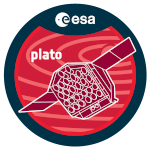Transport of chemical elements in main-sequence stars is still far from being understood and is responsible for large uncertainties in stellar models. The competition between all transport processes leads to variations of stellar abundances. This is only when taking all these processes into account that we will be able to explain observed surface abundances and to model correctly the internal structure of stars. The study of the signatures of seismic acoustic glitches in solar like oscillations has been proven to successfully unveil internal stellar characteristics such as the helium second ionisation zone and the location of the base of the surface convective zone. The latter is particularly important for the transport of chemicals as it strongly impacts the efficiency of atomic diffusion, especially for F-type stars. In this presentation, we show an analytical development making the link between the physical conditions in the penetrative convective (PC) region and the signature in the r010 frequency ratios. We applied this model to a Kepler Legacy F-type star and showed that if penetrative convection is responsible for the signature in the observed ratios r010, then PC extends much deeper than in the Sun. This opens new possibilities to constrain the transport of chemicals in these stars and to improve its current modelling in stellar evolution models.

 PDF version
PDF version
